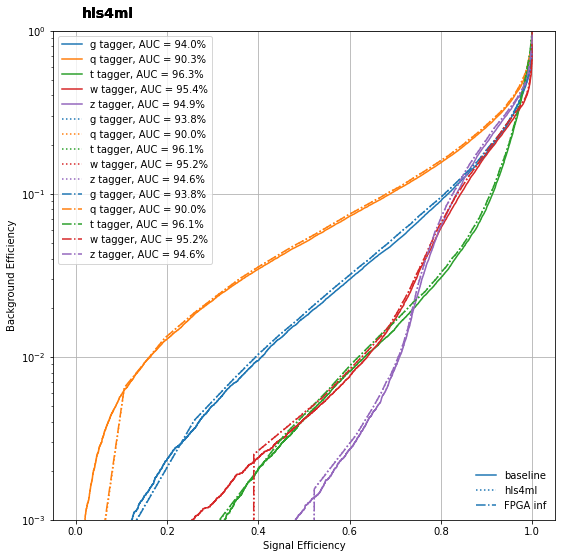NN_train: which contains the notebooks used to create and save the Keras and Qkeras models.PYNQ_files: which contains the .bit and .hwh files needed to load the overlay (exported from Vivado 2020.1), it contains also teh notebook ran on the board.
It is used a different hls4ml version from actual release (0.5.0), to install it run the following command:
pip install git+https://github.com/jmduarte/hls4ml.git@pynq#egg=hls4ml[profiling]
This specific hls4ml branch can be found here and teh original notebooks at this link
The test are performed on a PYNQ-Z2 board equipped with xc7z020clg400-1 ZYNQ FPGA.
Here are presented the resources estimated by vivado and the actual utilization on the optimized model.
| Model | BRAM[%] | DSP[%] | FF[%] | LUT[%] |
|---|---|---|---|---|
| Vanilla | 45 | 123 | 31 | 101 |
| Quntized+Pruned | 18 | 91 | 20 | 114 |
| FPGA implementation | 3 | 87 | 17 | 34 |
As it is clear the main bottlenecks are the PS-PL interface (AXI memory mapped) and the encode-decode performed on the PS side, to lower the first it is possible to perform burst transers employing a DMA (transfer data via DDR memory), insted to alleviate the second the functions for encoding and decoding can be vectorized.
These problems can be avoided entirely if the input and output are preprocessed in the PL side.
